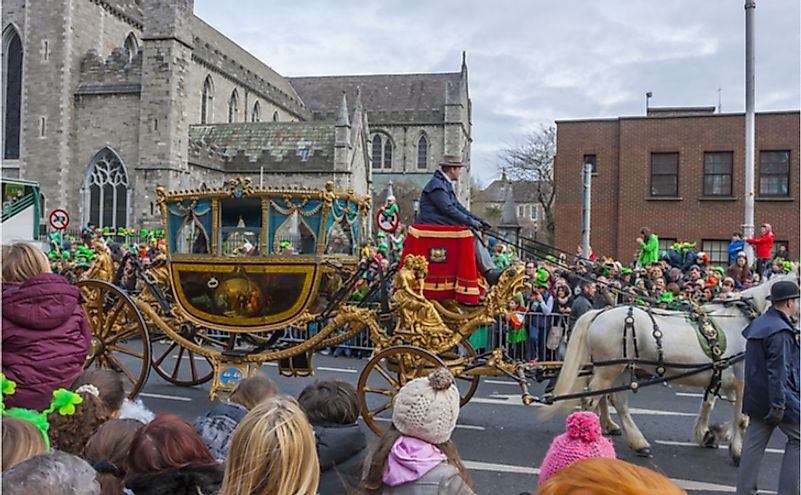What Is The Ethnic Composition Of Ireland?

The population of the Republic of Ireland is slightly over 4.8 million. When discussing Ireland, it is important to distinguish between the Republic of Ireland often referred to as Ireland, and Northern Ireland, because the two are politically different units on the same island
Ethnic Composition of Ireland
The Irish make up the largest section of Ireland’s population (85%). There are about 500,000 non-Irish nationals, a majority of whom are from Poland (123,000), the UK (103,000) Romania (29,200), and Lithuania (36,550). There are also significant numbers of immigrants from France, Italy, and Spain.
History of the Irish Population
Throughout history, Ireland has maintained a small population compared to the other regions of Europe. From the mid-18th to the early 19th centuries the island experienced a population boom as a result of industrial and agricultural revolutions. From 1790 to 1840 the population doubled to 8 million, and at its peak, the population density matched that of England and the rest of Europe. In the mid-nineteenth century, the Great Famine struck, and millions of people died from starvation while others emigrated to other places. The population of Ireland dropped to 6.5 million in 1845, and a decade later it clocked 5 million. The decline continued into the 20th century, and by 1961, it hit a record low of 2.8 million. Towards the late 1960s, the population began to grow, and in the 1990s the country experienced a rapid economic boom. Immigration began to outweigh emigration. Large numbers of former immigrants began returning to the country, especially from Central Europe and Asia. In 2013, the Republic of Ireland had the largest number of migrants in the European Union. Immigrants from across the world also arrived and settled in the country.
Migration
There is a large Irish diaspora in Canada, England, Australia, and the United States. About 5 million Canadians (15%) are of Irish descent while more than 34 million Americans are of Irish ancestry. Ireland became a destination for immigrants from Lithuania, Poland, the Czech Republic, and Latvia during the economic boom of the 1990s. About 12% of the population consists of foreigners, while 25% of infants between 2010 and 2015 were born to women from outside the country.
Languages
Irish is the national language of Ireland, but English is the most spoken. About 50% of the population is conversant with the Irish language, but 39% is competent. The Irish language is spoken as a community language in the Gaeltacht region. Road signs are bilingual, but most print media and public notices are in English. Government services are officially offered in bilingual, but citizens struggle to access services in Irish as government publications are offered in English. The military maintains an all-Irish policy where arms and foot drills are instructed in the Irish language. Polish is the second most widely spoken language due to a large number of immigrants from Poland. Other languages in the country include Czech, Slovak, Hungarian, Latvian, and Lithuanian. High school students who choose to learn foreign languages choose French, Italian, German, or Spanish.
Religion
The Irish constitution preserves the freedom of religion for all citizens in the country. Christianity, particularly Catholicism, is the dominant religion, although the number of people identifying as Christian is on a steep decline. About 4.2% of the population identify as Protestant, 1.4% Orthodox, 123 percent Muslim, and 9.8 percent are not affiliated to any religion. The Church of Ireland is the second-largest after the Catholic Church. Immigration has fueled the growth of the Muslim and Hindu populations that have grown by over 70% since the start of the decade. Although religious institutions run most of the schools in the country, the younger generation opts for secularism with the view that religion is divisive.











